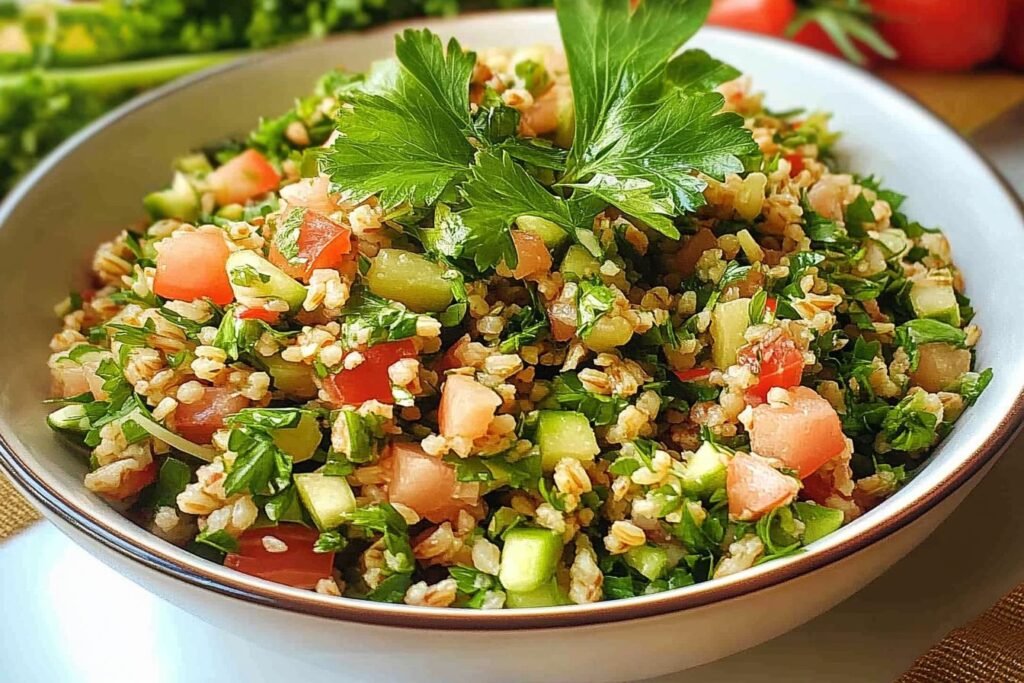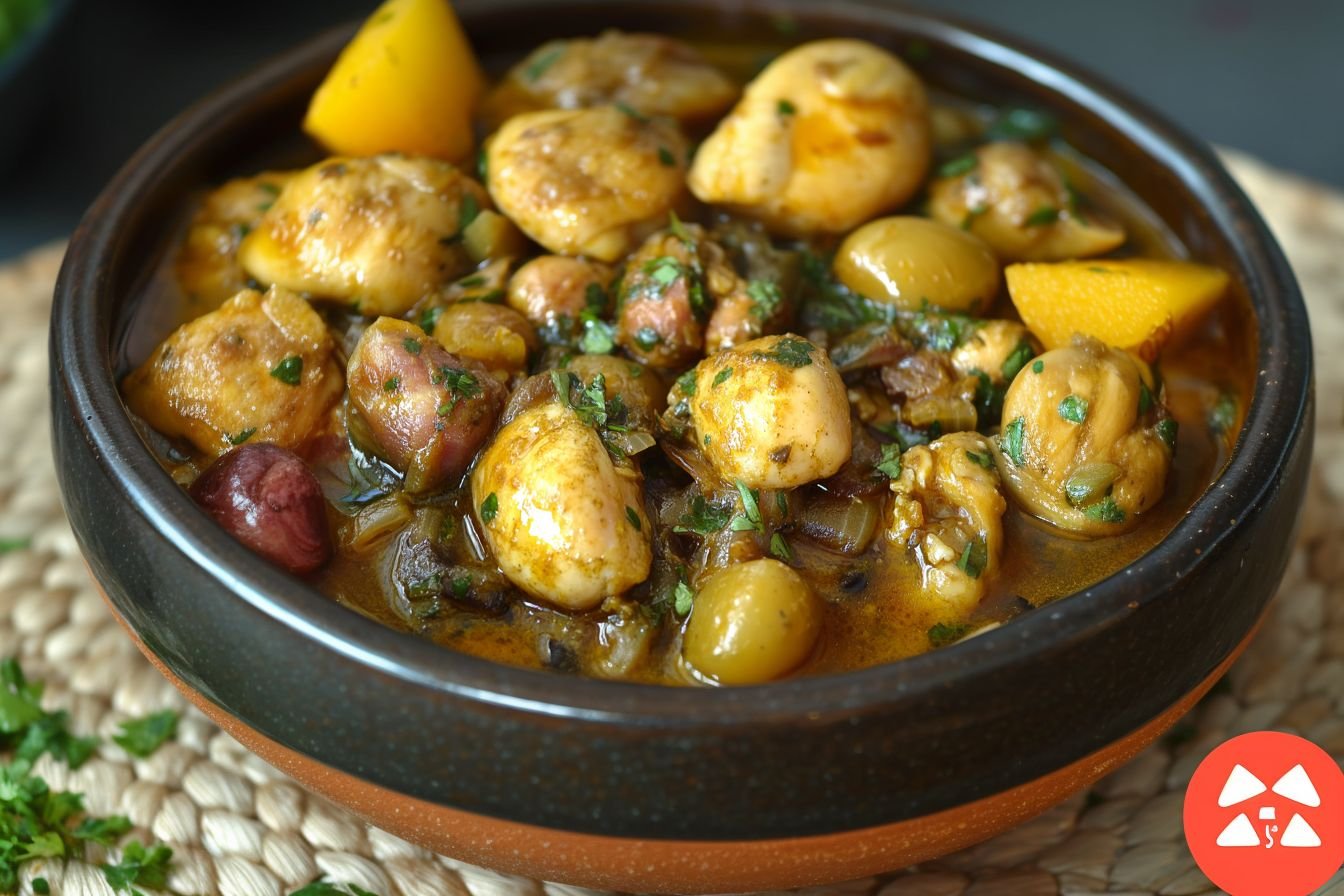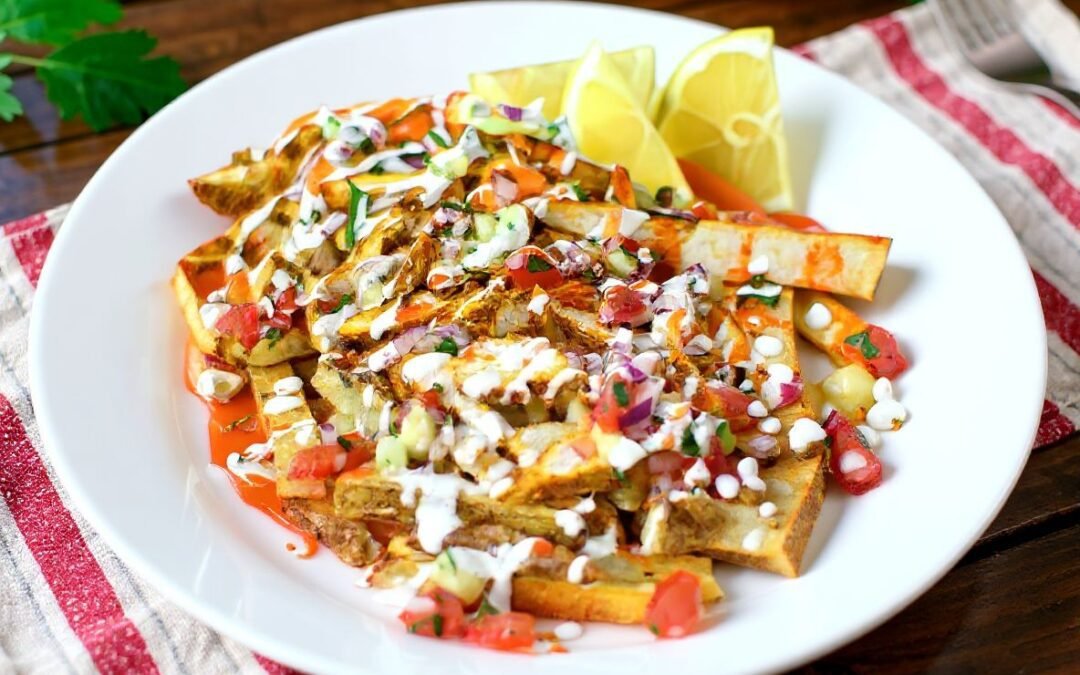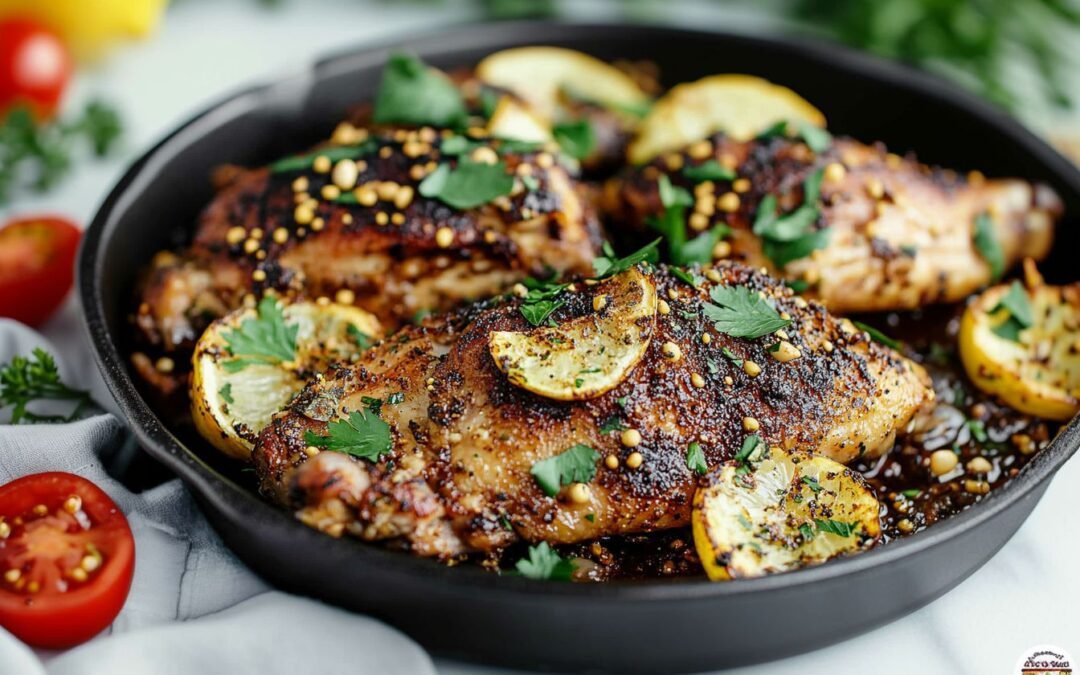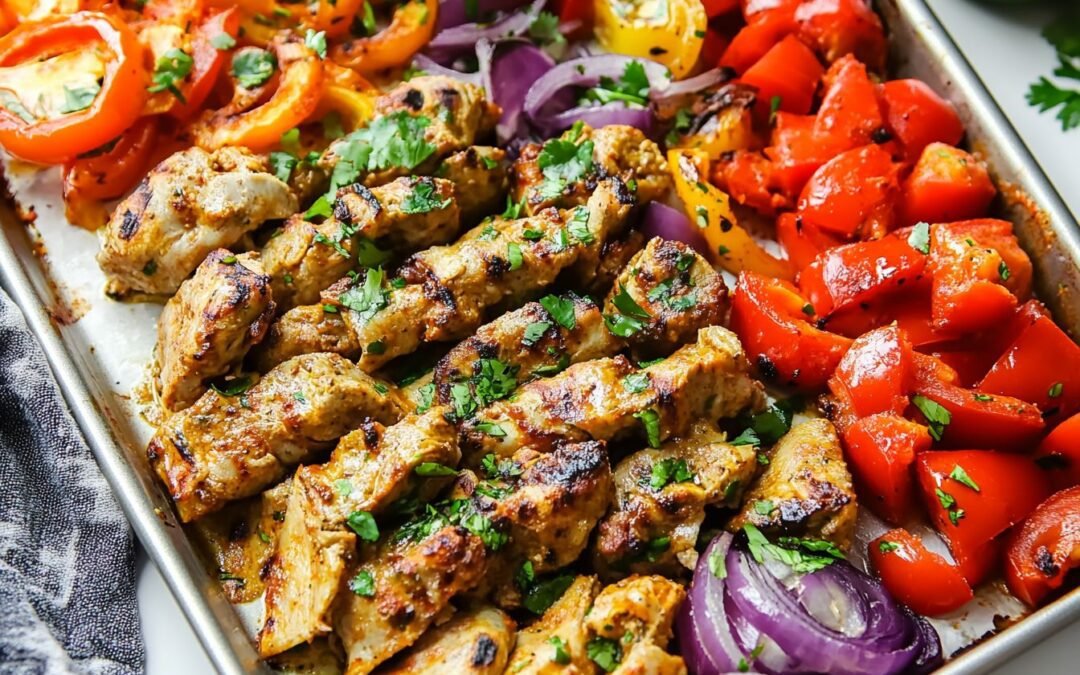When I think of comforting and flavorful dishes, Algerian chicken tagine always comes to mind. This aromatic stew combines tender chicken thighs, flavorful spices like paprika and cumin, and the bright acidity of preserved lemons, creating a dish that’s both hearty and refreshing. With ingredients like potatoes, garlic, olives, and a hint of sweetness from raisins, it’s a delightful fusion of tastes that captures the spirit of North African cuisine.
I love how the simmering spices fill my kitchen with an irresistible aroma. The vibrant colors of the ingredients, from the rich yellow of turmeric to the deep green olives, make it as visually appealing as it is delicious. Whether you’re hosting a dinner party or just enjoying a cozy night in, this tagine is sure to impress.
History of Algerian Cuisine
Algerian cuisine has a rich history influenced by various cultures and peoples. I find it fascinating how this culinary tradition reflects the country’s heritage.
The Berbers were the original inhabitants, utilizing local ingredients like grains, meat, and vegetables. Their cooking techniques laid the groundwork for many classic dishes.
The arrival of Arab traders introduced spices and new cooking methods. This blend created a variety of flavorful dishes that are recognizable today.
During the Ottoman Empire, Turkish influence brought in new ingredients and preparation styles. Dishes were often prepared with more elaborate spices, enhancing the flavor profile.
Colonial rule by the French also impacted the cuisine. I notice elements of French cooking in some modern Algerian dishes.
Key Influences on Algerian Cuisine:
- Berber Roots: Focus on grains and local vegetables.
- Arab Contributions: Introduction of spices and new cooking techniques.
- Ottoman Influence: Richer flavors and elaborate dishes.
- French Colonial Impact: Blending of French culinary practices.
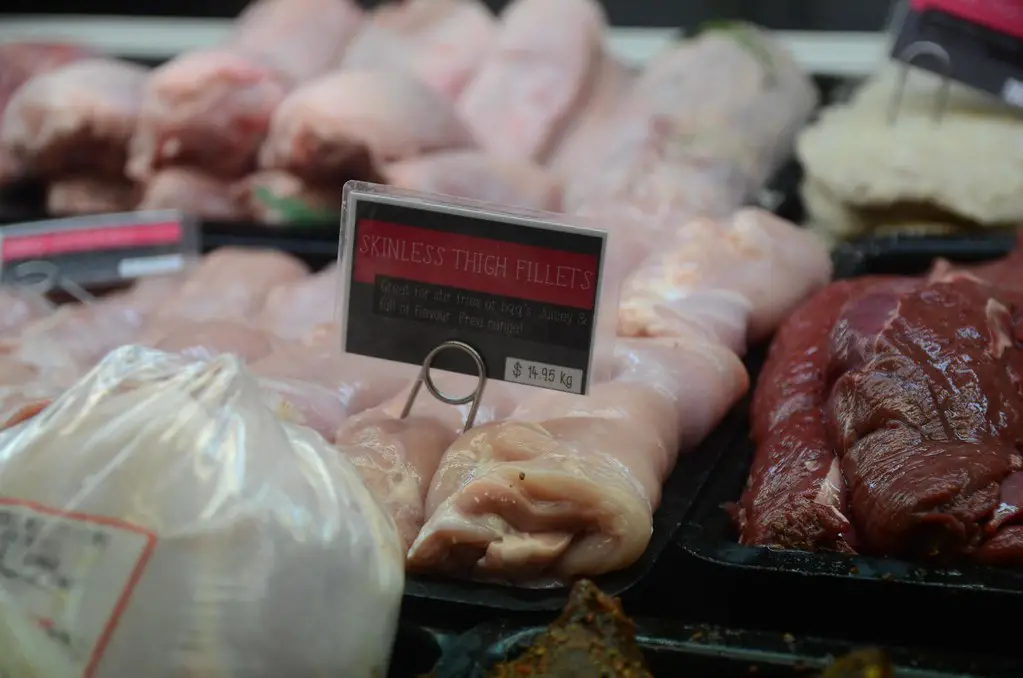
Ingredients
- 3 cubed medium potatoes
- 3 chicken thigh
- 2 teaspoons of paprika
- 1 teaspoon of ground cumin
- 1 teaspoon of ground ginger
- 1 teaspoon of turmeric
- 1 teaspoon of cinnamon
- Ground black pepper, to taste
- 2 tablespoons of olive oil
- 1 peeled and finely sliced onion
- 3 minced garlic cloves
- 1 glass of white wine
- 2 (rinsed and halved) lemons
- 175g pitted green olives
- 75g of raisins
- 600ml chicken stock
- A handful of chopped parsley
- A handful of chopped fresh coriander
How to make Algerian chicken tagine?
- Initially, the poultry undergoes a dry preparation followed by a thorough spice application, facilitating deep flavor penetration through a one-hour marination period.
- Subsequently, the chicken is subjected to a high-temperature sear in olive oil, specifically over medium-high heat for approximately seven minutes, establishing a browned exterior.
- The cooking process then transitions to a slower braise, with the introduction of aromatic vegetables over medium-low heat, and a covered cooking period of roughly fifteen minutes.
- A deglazing and simmering phase follows, incorporating liquids and supplementary ingredients, brought initially to a simmer over medium heat, then reduced to low heat. This stage, lasting between 35 and 45 minutes, ensures the chicken and accompanying elements achieve optimal tenderness.
- Finally, fresh herbs are incorporated immediately before serving, contributing a vibrant, herbaceous finish to the dish. This meticulous sequence results in a visually appealing and palatably complex meal, designed for communal enjoyment.
Serving Suggestions
Accompaniments
For sides, I often prepare couscous or flatbread. Couscous is a traditional choice that pairs wonderfully with the tagine’s rich sauce, allowing me to soak up every bit of flavor. I recommend steaming the couscous with spices like cumin or saffron for added depth.
Another favorite is roasted vegetables, such as carrots, zucchini, and bell peppers. Their natural sweetness complements the spices in the tagine. For a refreshing touch, I sometimes serve a side of tabbouleh salad, which adds a bright contrast with its herbs and lemon dressing.
Presentation Tips
When it’s time for serving, I like to place the chicken tagine in a shallow, colorful dish. This helps highlight the vibrant colors of the ingredients. A sprinkle of fresh cilantro or parsley on top adds freshness and a pop of color.
To enhance the dining experience, I often serve the tagine family style, allowing everyone to help themselves. Small bowls of additional spices or harissa can be placed to invite guests to customize their dishes. I also find that using rustic serving ware adds a homey feel that complements the dish’s origins.
Storing and Reheating Tips
Storing
- Cool Down: Let the tagine cool to room temperature before storing. This prevents condensation.
- Airtight Containers: I use airtight containers to keep the dish from drying out. Glass or plastic works well.
- Refrigeration: In the fridge, it lasts up to 3 days.
Freezing
- Portioning: I like to portion out the tagine before freezing. It makes reheating easier.
- Labeling: Labeling the containers with the date helps me keep track.
Reheating
- Microwave: I often use the microwave. I heat it on medium power, stirring occasionally until it’s hot.
- Stovetop: For a richer flavor, I opt for the stovetop. I add a splash of water and heat on low, stirring gently.
- Oven: Sometimes, I reheat it in the oven at 350°F (175°C) for about 20 minutes. I cover it to maintain moisture.
Cooking Tips and Techniques
- Marinate the Chicken: I like to marinate the chicken overnight. This allows the spices to penetrate deeply and makes the meat tender.
- Use Fresh Ingredients: Fresh herbs and spices are essential. I prefer using whole spices and grinding them just before cooking for the best flavor.
- Layer Flavors: Start by sautéing aromatics like garlic and onions before adding chicken. This builds a rich base for the dish.
- Choose the Right Pot: A tagine pot is ideal, but a Dutch oven works well too. The goal is to maintain moisture while allowing steam to circulate.
- Add Ingredients in Stages: I like to add vegetables at different times. This keeps them from getting mushy and lets each ingredient shine.
- Control the Heat: I cook on low heat to ensure the chicken becomes tender while the spices blend harmoniously.
- Adjust Seasoning: Always taste as I cook. I might add a pinch of salt or a dash of lemon juice for brightness.
Conclusion
Algerian chicken tagine is a delightful dish that brings warmth and comfort to any meal. The combination of spices, tender chicken, and vegetables creates a rich flavor profile I find irresistible.
I appreciate its versatility, as I can easily adjust the ingredients based on what I have in my kitchen. Whether it’s chickpeas, olives, or dried fruits, each addition offers a unique twist.
Cooking this dish also invites a sense of community. I love sharing it with family and friends, allowing everyone to partake in the experience.
For anyone interested in trying something new, I highly recommend exploring this recipe. It’s not only delicious but also a chance to explore Algerian culture through its flavors.
As already mentioned, tabbouleh salad is a refreshing accompaniment to this dish!
Get this tabbouleh salad with freekeh recipe now (by clicking the image below):
